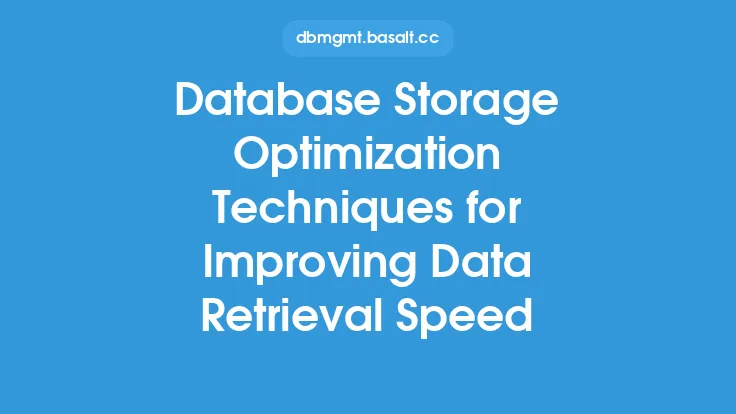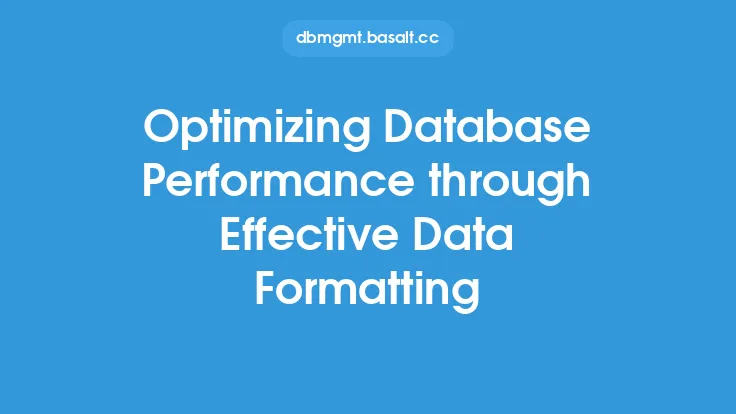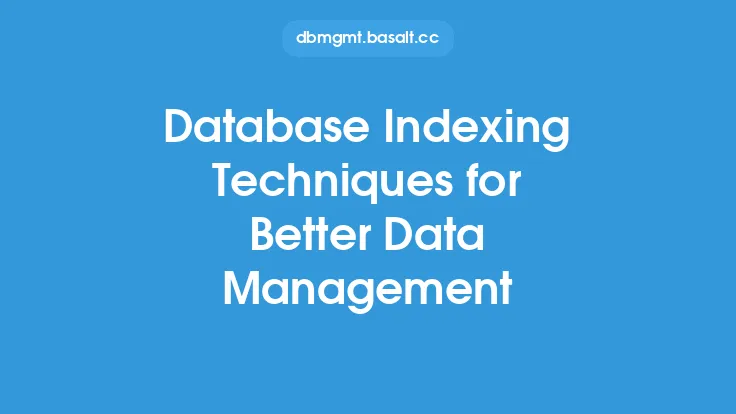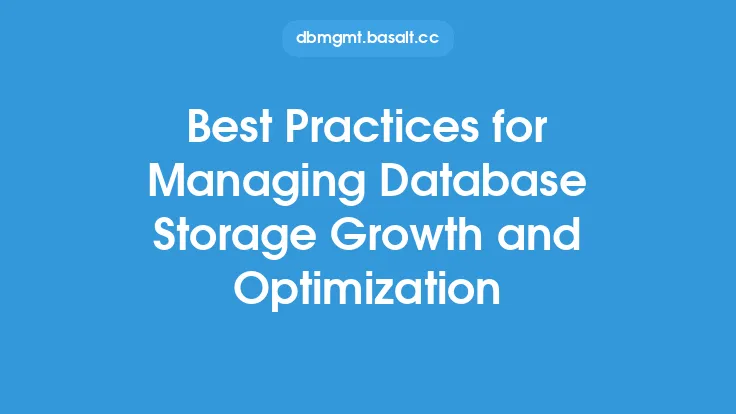Data compression is a crucial aspect of database storage optimization, as it enables organizations to reduce the amount of storage space required to store their data, thereby improving data retrieval speeds and reducing costs. Effective data compression techniques can help minimize the storage footprint of a database, making it possible to store more data in less space. In this article, we will delve into the world of data compression, exploring the various techniques and algorithms used to compress data in database storage.
Introduction to Data Compression
Data compression is the process of reducing the size of data by representing it in a more compact form. This is achieved by eliminating redundant data, representing data in a more efficient format, or using algorithms that can compress data without losing any information. Data compression is essential in database storage, as it helps reduce the storage space required to store data, improves data transfer speeds, and reduces the cost of storing and managing data.
Types of Data Compression
There are two primary types of data compression: lossless and lossy compression. Lossless compression algorithms compress data without losing any information, ensuring that the original data can be restored from the compressed data. Lossy compression algorithms, on the other hand, discard some of the data during the compression process, resulting in a loss of information. Lossy compression is typically used for audio and video data, where the loss of some data does not significantly affect the overall quality. In database storage, lossless compression is preferred, as it ensures that data is not lost or corrupted during the compression process.
Data Compression Algorithms
Several data compression algorithms are used in database storage, each with its strengths and weaknesses. Some of the most common algorithms include:
- Run-Length Encoding (RLE): RLE is a simple compression algorithm that replaces sequences of identical bytes with a single byte and a count of the number of times it appears in the sequence.
- Huffman Coding: Huffman coding is a variable-length prefix code that assigns shorter codes to more frequently occurring bytes.
- Lempel-Ziv-Welch (LZW) Compression: LZW compression is a dictionary-based compression algorithm that builds a dictionary of substrings as they appear in the data and replaces each substring with a reference to the dictionary.
- DEFLATE: DEFLATE is a combination of the LZ77 and Huffman coding algorithms, which provides a good balance between compression ratio and speed.
Data Compression Techniques
In addition to data compression algorithms, several techniques can be used to improve the compression ratio and speed of data compression. Some of these techniques include:
- Data Normalization: Data normalization involves transforming data into a standard format, which can help improve compression ratios by reducing the amount of redundant data.
- Data Partitioning: Data partitioning involves dividing data into smaller chunks, which can help improve compression ratios by allowing each chunk to be compressed separately.
- Data Encoding: Data encoding involves transforming data into a more compact format, such as using a binary format instead of a text format.
Implementing Data Compression in Database Storage
Implementing data compression in database storage requires careful consideration of several factors, including the type of data being stored, the compression algorithm used, and the impact on data retrieval speeds. Some databases, such as Oracle and Microsoft SQL Server, provide built-in support for data compression, while others may require third-party tools or custom implementations. When implementing data compression, it is essential to consider the following factors:
- Compression Ratio: The compression ratio is the ratio of the size of the compressed data to the size of the original data. A higher compression ratio indicates better compression.
- Compression Speed: The compression speed is the time it takes to compress the data. Faster compression speeds are essential for real-time data compression.
- Data Retrieval Speed: The data retrieval speed is the time it takes to retrieve the compressed data. Faster data retrieval speeds are essential for applications that require fast data access.
Best Practices for Data Compression in Database Storage
To get the most out of data compression in database storage, follow these best practices:
- Use the right compression algorithm: Choose a compression algorithm that is suitable for the type of data being stored.
- Use data normalization and partitioning: Normalize and partition data to improve compression ratios.
- Use data encoding: Use data encoding to transform data into a more compact format.
- Monitor compression ratios and speeds: Monitor compression ratios and speeds to ensure that data compression is effective and efficient.
- Test and evaluate: Test and evaluate different data compression techniques and algorithms to determine the best approach for your specific use case.
Conclusion
Effective data compression techniques are essential for optimizing database storage, as they enable organizations to reduce the amount of storage space required to store their data, improve data retrieval speeds, and reduce costs. By understanding the different types of data compression, algorithms, and techniques, and by following best practices for implementing data compression, organizations can improve the efficiency and effectiveness of their database storage systems. Whether you are using a relational database or a NoSQL database, data compression is an essential aspect of database performance optimization that can help you get the most out of your data storage systems.





